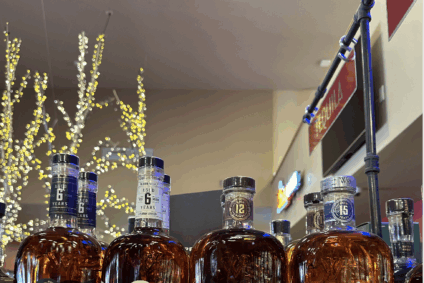A Beginner’s Guide to Mezcal
Mezcal, often referred to as tequila’s smoky cousin, is a traditional Mexican spirit that has been gaining popularity worldwide. While both mezcal and tequila are made from agave, there are significant differences in their production processes, flavors, and varieties. Here’s a straightforward guide to help you understand the basics of mezcal.
What is Mezcal?
Mezcal is a distilled alcoholic beverage made from the agave plant. The word “mezcal” comes from the Nahuatl word “metl” and “ixcalli,” which together mean “oven-cooked agave.” While tequila can only be made from the blue agave plant, mezcal can be made from over 30 varieties of agave, with the most common being Espadín.
Production Process
The production of mezcal is deeply rooted in tradition and involves several key steps:
Harvesting: Agave plants, also known as maguey, are harvested when they are around 7-15 years old. The leaves are cut off, leaving the heart of the plant, called the piña.
Roasting: The piñas are cooked in earthen pits lined with volcanic rocks and wood, giving mezcal its distinctive smoky flavor. This process can take several days.
Fermentation: After roasting, the cooked agave is crushed, traditionally using a stone wheel called a tahona. The crushed agave is then placed in fermentation vats, where it ferments with natural yeasts for several days to weeks.
Distillation: The fermented agave mash is distilled, usually twice, in copper or clay stills to produce mezcal. The resulting spirit is then either bottled directly or aged in wooden barrels.
Types of Mezcal
Mezcal can be classified based on its production methods and aging process:
Joven (Young): Clear mezcal that is bottled immediately after distillation. It has a fresh and vibrant flavor.
Reposado (Rested): Aged for 2-12 months in wooden barrels, giving it a smoother taste with hints of wood and spice.
Añejo (Aged): Aged for at least one year in barrels, resulting in a richer, more complex flavor profile.
Tasting Notes
Mezcal is known for its complex and diverse flavor profile, which can vary greatly depending on the type of agave, the region it’s produced in, and the specific production methods. Common tasting notes include smoke, earth, citrus, herbs, and tropical fruit.
How to Enjoy Mezcal
Mezcal is traditionally enjoyed neat, sipped slowly to appreciate its complex flavors. It is often served with slices of orange and a sprinkle of sal de gusano (worm salt). However, mezcal can also be used in cocktails, adding a unique smoky element to drinks like the Margarita or Paloma.
Mezcal is a versatile and intriguing spirit with a rich cultural heritage. Understanding the basics of its production, types, and flavors can enhance your appreciation and enjoyment of this distinctive Mexican drink. Whether sipped neat or mixed in a cocktail, mezcal offers a unique tasting experience that reflects the land and traditions of its origin!
We have an amazing selection of all sorts of tequila at Boone’s as well as a great selection of Mezcal! Come and talk to our friendly and knowledgeable staff and we’d be happy to make a recommendation for you!

